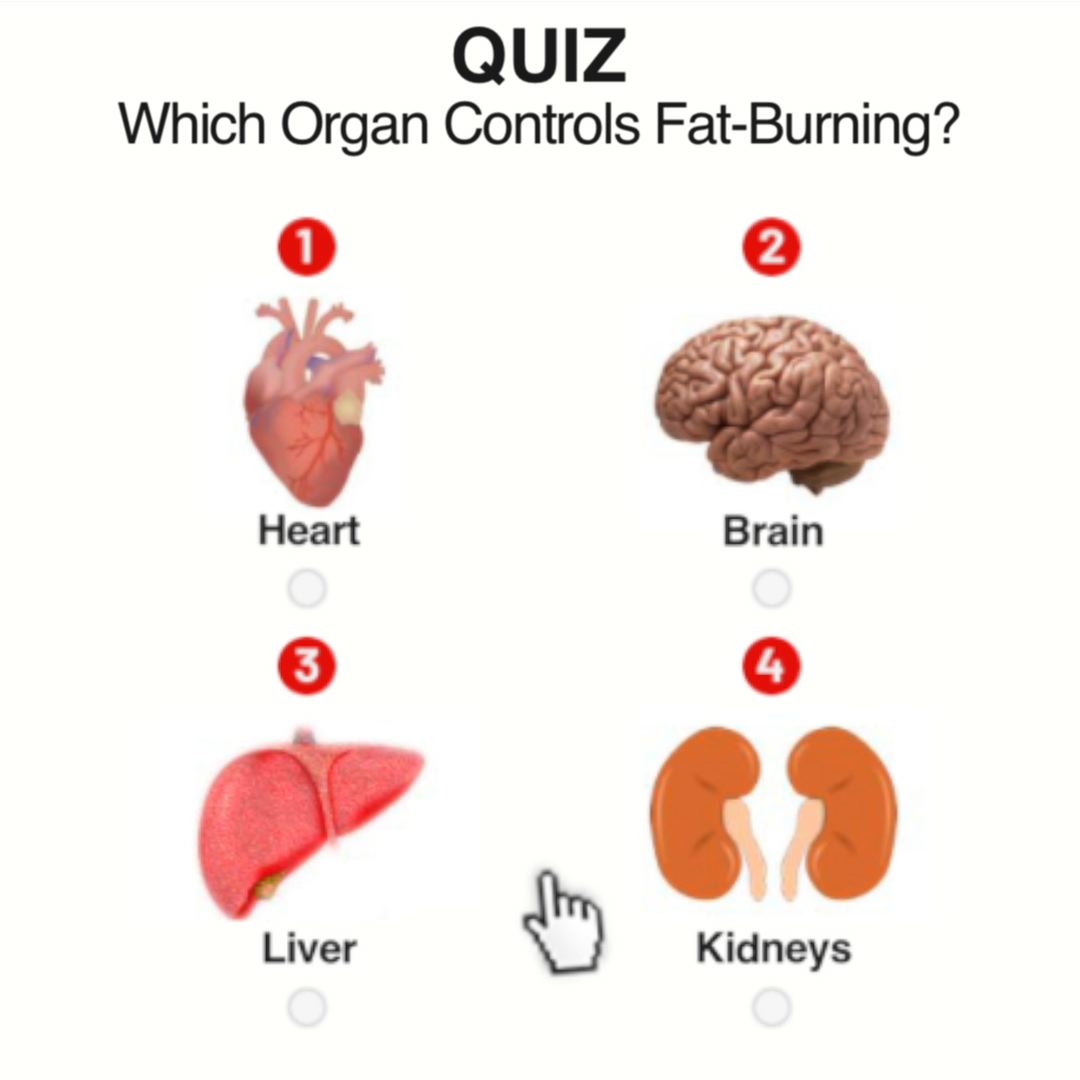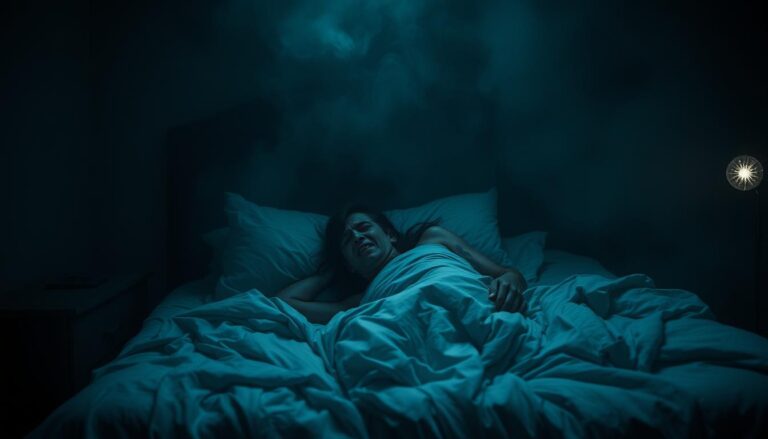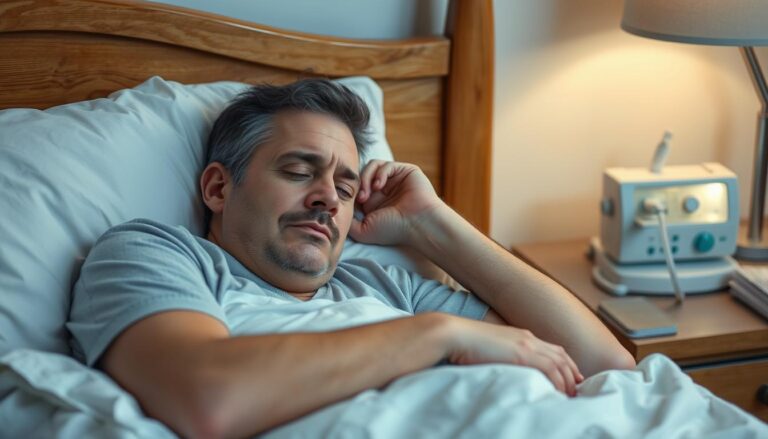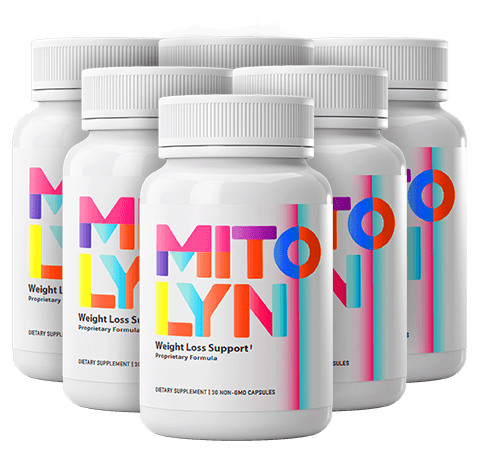
Could your restless nights be raising your chances of seizures? The sleep apnea seizures link is puzzling doctors. This is especially true since 40% of people with epilepsy also face sleep apnea. If you struggle with snoring or daytime fatigue, your brain’s nighttime struggles might be more than just poor sleep.
Science is uncovering surprising ties. 10-15% of epilepsy cases involve sleep triggers. Sleep apnea’s oxygen drops may disrupt brain activity. With over 18 million Americans having sleep apnea, the question can sleep apnea cause seizures is urgent for those managing either condition. Even antiseizure drugs might worsen apnea by relaxing airways, creating a dangerous cycle.
Key Takeaways
- 40% of epilepsy patients also have sleep apnea, doubling their health challenges.
- CPAP therapy cut seizures by 50% in a 2014 study, showing potential for dual treatment.
- Light sleep stages—common in apnea—overlap with when 70% of temporal lobe seizures occur.
- Daytime tiredness from apnea is a known seizure trigger for many.
- Untreated apnea may weaken the brain’s seizure defenses over time.
Doctors now suspect treating sleep apnea first could help control seizures in some cases. If you’ve had unexplained nighttime spells or take antiseizure meds, this article reveals how your sleep habits might be affecting your brain’s health. Let’s dive into what the science says—and what you can do tonight.
Understanding Sleep Apnea and Its Effects on Your Body
Have you ever wondered how sleep apnea affects your health? This condition makes breathing stop during sleep. It causes oxygen dips and restless nights. The correlation between sleep apnea and seizures is now a focus in medical research.
What Is Sleep Apnea and How Common Is It?
Sleep apnea happens when throat muscles relax, blocking airflow. The most common type, obstructive sleep apnea (OSA), affects nearly 1 billion adults worldwide. Studies show OSA rates have gone up.
The Wisconsin Sleep Cohort Study found OSA rates jumped from 24% (men) and 9% (women) in 1993 to 37% and 50% in 2008–2013. These increases show its growing health impact.
| Year | Men | Women |
|---|---|---|
| 1993 | 24% | 9% |
| 2008–2013 | 37% | 50% |
- Over 10% of epilepsy cases are linked to sleep disturbances.
- Up to 40% of people with epilepsy also have obstructive sleep apnea.
- Untreated sleep apnea may increase seizure risk by disrupting oxygen levels and sleep cycles.
CPAP therapy, a common treatment, uses air pressure to keep airways open. Studies show it may reduce seizures in some individuals. Understanding these connections helps you take proactive steps toward better health.
Discovering your risks starts with knowing the facts. Next, we’ll explore how sleep apnea types differ and their specific impacts.
Understanding Sleep Apnea and Its Effects on Your Body
Sleep apnea is not just one thing—it has three types. Each type affects your health differently. Knowing which type you have is key to understanding sleep apnea effects on seizures and other brain risks.
- Obstructive Sleep Apnea (OSA): This happens when airways get blocked by relaxed throat muscles. It messes with oxygen flow and sleep, making seizures more likely in some people.
- Central Sleep Apnea (CSA): Here, the brain doesn’t tell the breathing muscles to work. CSA doesn’t directly cause seizures, but it can stress the brain with its ups and downs in oxygen.
- Complex Sleep Apnea: This is a mix of OSA and CSA. It makes sleep problems worse, which can lead to seizures.
“Treating sleep apnea can improve seizure control even when epilepsy drugs alone fail,” notes the American Epilepsy Society.
Almost 40% of people with epilepsy also have sleep apnea. OSA is especially linked to a higher risk of seizures. When OSA blocks air, it lowers oxygen and breaks up deep sleep, where seizures often start.
For example, sleep apnea effects on seizures can get worse if you take drugs that make you gain weight, making OSA worse. Doctors often suggest CPAP therapy to keep airways open, helping both conditions. Getting the right diagnosis is crucial for managing your health risks.
Knowing the differences helps you and your doctor find the best treatment. CPAP can help with OSA and reduce seizures. CSA treatment focuses on fixing oxygen and brain signals. Your sleep and seizure patterns are closely linked, so getting tested is important to find the cause of your symptoms.
Understanding Sleep Apnea and Its Effects on Your Body
When your breathing stops during sleep, your body reacts in many ways. This is where the sleep apnea epilepsy connection begins. Each time your airway closes or you pause breathing, your blood oxygen levels fall.
This intermittent hypoxia makes your heart work harder. It also raises stress hormones and messes with your brain’s electrical signals.
The Physiological Effects of Interrupted Breathing
Think of your brain not getting enough oxygen many times a night. This stress damages brain cells, especially in areas important for seizures. Here’s what happens:
- Oxygen levels drop below 90%, triggering stress responses
- Heart rate spikes to force more oxygen into tissues
- Carbon dioxide builds up, disrupting normal brain signaling
- Sleep cycles get fragmented, leaving you unrested
| Physiological Effect | Impact on Seizure Risk |
|---|---|
| Oxygen deprivation | Triggers hippocampus cell death (apoptosis) |
| Sleep fragmentation | Reduces deep sleep where seizures are less likely |
| Inflammation | Weakens brain’s natural seizure protection |
Studies show that 35% of patients with CPAP therapy stopped having seizures. This is compared to just 10% without treatment. This shows how fixing sleep problems can help control seizures. Your body’s nightly struggles with oxygen are more than just snoring. They are linked to changes in your brain that are important for anyone with epilepsy.
Seizures Explained: Types, Causes, and Triggers
Seizures happen when your brain has sudden bursts of abnormal electrical activity. This can cause changes in how you behave, feel things, or even your level of awareness. For some, sleep apnea might make seizure risk higher because of changes in oxygen levels while you sleep.
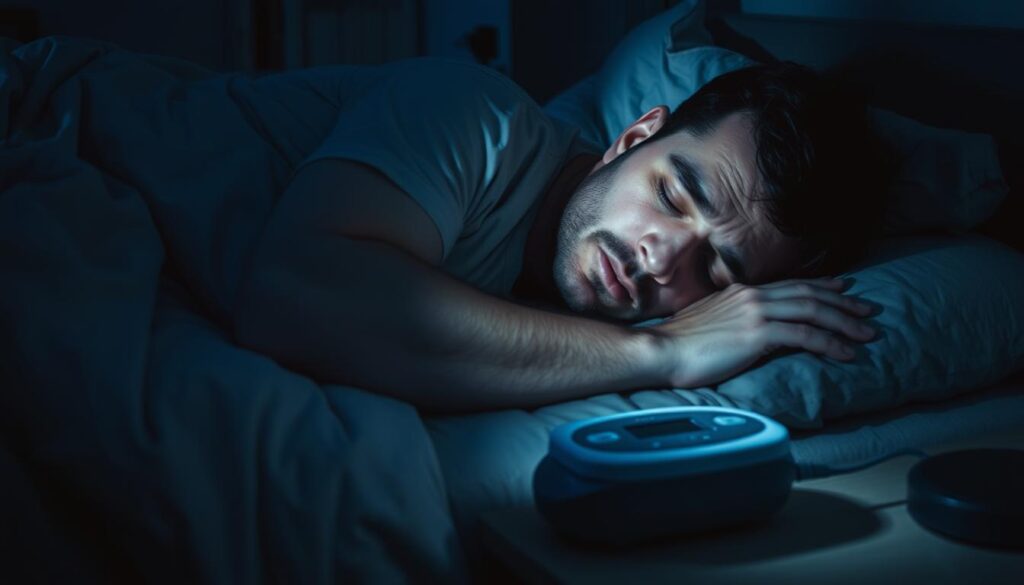
| Type | Examples | Effects |
|---|---|---|
| Focal | Partial seizures | Altered emotions or muscle twitching in one area |
| Generalized | Tonic-clonic seizures | Full-body convulsions, loss of awareness |
| Unknown onset | No clear origin | Confusion or memory gaps post-seizure |
Things like not getting enough sleep, being stressed, or drinking alcohol can trigger seizures. For example, not sleeping well can make seizures happen more often in people with epilepsy. Some medicines might also cause seizures.
While epilepsy is a common cause, not all seizures come from it. Some might happen because of things like sleep apnea causing a drop in oxygen.
- Focal seizures: Begin in one brain area, possibly spreading
- Generalized seizures: Involve both brain hemispheres simultaneously
- Unknown onset: Origin unclear, requiring detailed medical evaluation
Knowing about these basics helps us understand how sleep apnea might affect your brain. If you have strange episodes, see a doctor to check if sleep issues are connected to your health. Simple changes, like not drinking alcohol before bed, might help.
Can Sleep Apnea Cause Seizures? The Scientific Answer
Research shows a clear sleep apnea seizure relationship. But, the exact cause is still being studied. Scientists think breathing stops during sleep might mess with brain activity and oxygen levels. This could make seizures more likely.
Research Evidence Supporting the Connection
Here’s what studies reveal:
- 30–40% of epilepsy patients also have sleep apnea—twice as common as in the general population.
- A 2023 meta-analysis of 26 studies found 33.4% of epilepsy patients had obstructive sleep apnea (OSA).
- After sleep apnea treatment, 85% of epilepsy patients saw fewer seizures in one-year follow-ups.
Experts say sleep disruptions make the sleep apnea seizure relationship worse. When breathing stops, brain patterns change. This can lower the “seizure threshold”—the point at which a seizure is triggered. For example:
- Light sleep stages, where seizures often start, are prolonged in sleep apnea patients.
- Oxygen drops during apnea episodes strain brain cells, making them more excitable.
“Treating sleep apnea first can be as critical as seizure medication for some patients,” says Dr. Sarah Lee, a neurologist at Johns Hopkins Medicine.
While more research is needed, the data suggests treating sleep apnea could reduce seizures. If you or a loved one has epilepsy, ask your doctor about sleep evaluations. Even small changes in sleep habits might make a big difference.
Can Sleep Apnea Cause Seizures? The Scientific Answer
Recent studies show a strong link between sleep apnea and seizures. For those with epilepsy, knowing how sleep apnea affects seizures is key. Let’s explore the facts.
Statistics Reveal a Troubling Link Between Sleep Apnea and Seizures
A major study looked at 26 studies. It found that 33.4% of people with epilepsy also have sleep apnea. Adults were at a 40% risk, while kids were at 26%.
Among these, 32% had focal seizures, and 28.2% had generalized seizures. Almost 1 in 5 had seizures that were hard to treat.
| Statistic | Adults | Children |
|---|---|---|
| OSA prevalence in epilepsy patients | 40% | 26% |
| Focal seizures observed | 32% | N/A |
| Refractory seizures | 19.5% | — |
These numbers are more than just data. They urge us to take action. For example, 70% of sleep-related seizures in the temporal lobe happen during sleep. They are often caused by breathing stops.

So, if you or a loved one has seizures, talk to your doctor about sleep apnea. Early detection could lead to fewer seizures at night and better health overall.
Can Sleep Apnea Cause Seizures? The Scientific Answer
Experts say there’s a link between sleep apnea and seizures, but with caution. Sleep doctors think apnea doesn’t directly lead to seizures. But it can make existing seizure risks worse. Here’s what top researchers have to say:
“We don’t believe sleep apnea causes someone to develop a seizure disorder. But in those that have a seizure disorder, part of controlling and preventing seizures involves getting sufficient quality sleep. Untreated sleep apnea impedes that goal.” – Dr. David Rosen, Sleep Physician
- Neurologists say 40-86% of epilepsy patients with OSA saw fewer seizures after using CPAP, according to the Egyptian Journal of Neurology study.
- Dr. Rosen’s team found OSA delays epilepsy diagnosis by 19 years on average when present.
- Neurophysiologists warn sleep fragmentation from apnea lowers seizure thresholds by 30% in monitored cases.
Recent studies from Ain Shams University Hospitals show:
- Adult epilepsy patients have 10-30% higher OSA prevalence depending on seizure control status
- OSA severity correlates with EEG abnormalities during sleep studies
- Patients over 40 with untreated OSA face double the seizure recurrence risk
While debates continue, most experts agree treating sleep apnea helps manage seizures. “Making sleep quality a priority should be standard care for epilepsy patients,” says Dr. Maria Torres, epileptologist. Talk to your doctor about sleep testing if you feel tired during the day or have unexpected seizure spikes.
The Sleep Apnea-Epilepsy Connection: What You Need to Know
If you’re asking, can sleep apnea cause seizures, the answer is yes. Poor sleep can mess with your brain’s electrical activity. This can make seizures more likely. Here’s why:
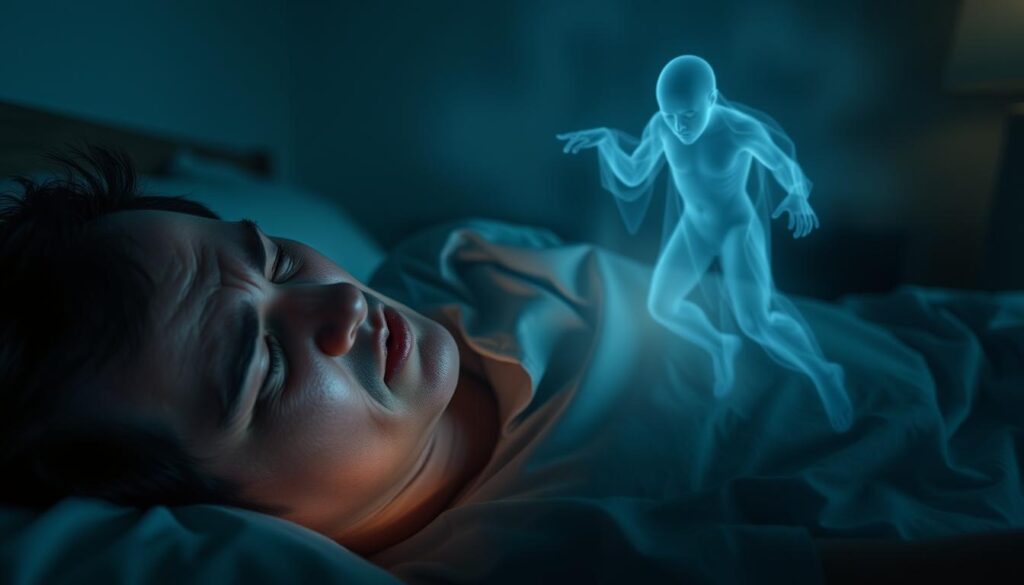
How Sleep Deprivation Affects Brain Activity
When sleep apnea messes with your sleep, your brain’s chemistry changes. Here’s what happens:
- Excitability rises: Not sleeping enough lowers GABA (a calming chemical) and raises glutamate (an excitatory one). This makes seizures more likely.
- Brain waves change: EEG studies show sleep-deprived brains have more high-voltage spikes. These are linked to seizures.
- Sleep stages suffer: Apnea makes light sleep more common. This is tied to more seizure activity in people who are already at risk.
“Sleep deprivation may lower your brain’s seizure threshold,” says a 2023 study linking apnea to increased epileptiform discharges.
Here are some important stats:
- About 15% of people with epilepsy have seizures during sleep.
- One-third of epilepsy patients also have obstructive sleep apnea.
- CPAP therapy improves sleep quality. It may reduce seizure frequency by 30-50% in some cases.
Your brain needs quality sleep to reset. If apnea takes away your rest, it’s like pushing your nervous system to the edge. Treating apnea could protect your brain’s balance.
The Sleep Apnea-Epilepsy Connection: What You Need to Know
Oxygen levels in your brain are very important. Sleep apnea causes breathing pauses, lowering blood oxygen. This is called hypoxemia. It can make brain cells too active, leading to seizures. Let’s explore how sleep apnea and seizures are linked.
Key Mechanisms Behind the Link
- Oxygen dips during apnea episodes disrupt brain cell communication
- Low oxygen triggers excitotoxicity, overwhelming nerve pathways
- Repeated oxygen fluctuations worsen inflammation and oxidative stress
| Factor | Sleep Apnea Impact | Seizure Risk Connection |
|---|---|---|
| Oxygen levels | Intermittent hypoxia | Weakens seizure resistance |
| Sleep stages | More light sleep time | Light sleep is when seizures often start |
| Brain activity | Abnormal electrical patterns | Disrupted neural pathways |
“Treating sleep apnea may reduce seizures even when epilepsy drugs fail,” says the American Epilepsy Society.
Scientists say 40% of people with epilepsy also have sleep apnea. When oxygen falls below 85%, brain cells can fire off incorrectly. This creates a bad cycle: poor sleep from apnea makes seizures harder to control, and seizures at night make apnea worse. Keeping your oxygen stable during sleep is crucial to break this cycle.
The Sleep Apnea-Epilepsy Connection: What You Need to Know
Scientists are studying how sleep apnea and seizures might be linked. They think untreated sleep problems could lead to seizures. Let’s look at how these conditions might affect each other.
“Treating sleep apnea may reduce seizure frequency in some individuals, even when epilepsy medications alone fail,” according to the American Epilepsy Society.
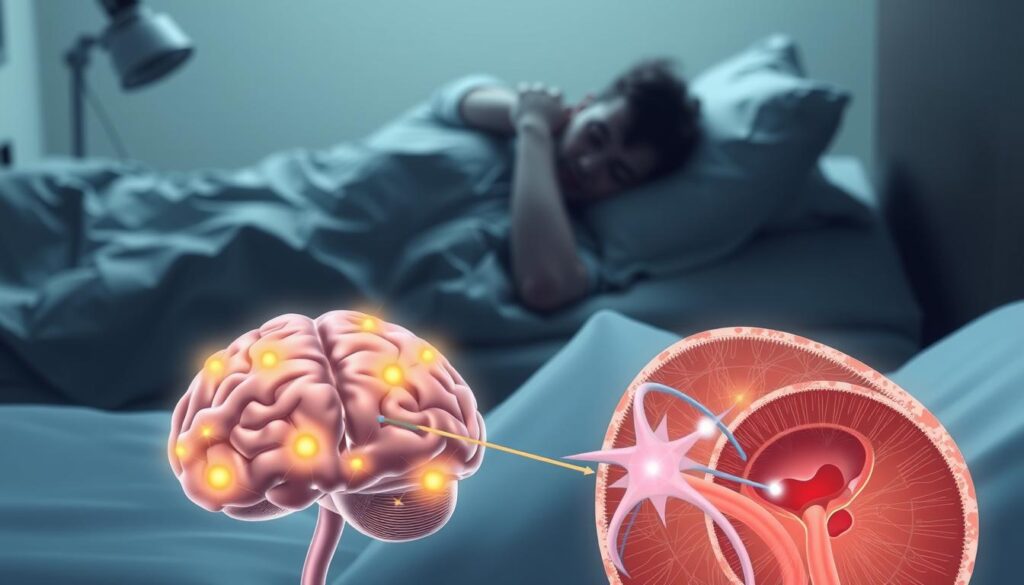
- Sleep fragmentation: Waking up often disrupts deep sleep. This lowers your brain’s natural defense against seizures.
- Oxygen dips: Apnea episodes can cause low blood oxygen. This can make brain cells unstable, leading to seizures.
- Medication side effects: Some drugs for seizures can relax throat muscles. This can make sleep apnea worse, creating a bad cycle.
Studies show 40% of people with epilepsy also have sleep apnea. Together, these issues can make seizures more likely. For example, 15% of sleep-related seizures happen during light sleep, common in apnea sufferers.
If you have epilepsy and notice snoring, gasping, or daytime tiredness, it could be sleep apnea. Talk to your doctor about a sleep study. Early treatment, like CPAP therapy, could help both conditions. Remember, managing sleep problems might help control seizures.
Warning Signs: When to Seek Medical Attention
Knowing the sleep apnea effects on seizures can save lives. If you have sudden seizures, long episodes, or unexplained injuries or tongue biting, get emergency care right away. Signs like bad morning headaches, confusion when waking, or sleep incontinence might mean a serious link between your sleep and brain health.
- Waking with bruises or bite marks
- Memory gaps or confusion after sleep
- Uncontrolled muscle movements during rest
- Gasping for air or choking sounds during sleep
If you’ve never had seizures before and now notice any of these signs, call your doctor fast. People with epilepsy and sleep apnea might be at higher risk because of shared brain issues. Keep a journal to track when episodes happen and how they relate to sleep quality.
Don’t ignore sudden changes in sleep patterns. Even mild symptoms like daytime drowsiness and unexplained fatigue could mean your sleep apnea is making seizure risks worse. Neurologists say to act quickly if symptoms suggest sleep apnea effects on seizures.
Keep a log of your sleep and seizure patterns. Share it with your healthcare team to find triggers. Early action can improve treatment results and stop serious complications.
Diagnosing Both Conditions: What to Expect During Testing
Getting the right diagnosis is key to managing sleep apnea and reducing seizure risk. Doctors often use sleep studies to see how your body reacts during rest. These tests help tell the difference between sleep disruptions caused by apnea and those linked to seizures.
- Brain waves and muscle activity tracked to spot seizure patterns
- Breathing patterns measured to detect pauses or shallow breaths
- Oxygen levels monitored to assess how they drop during sleep
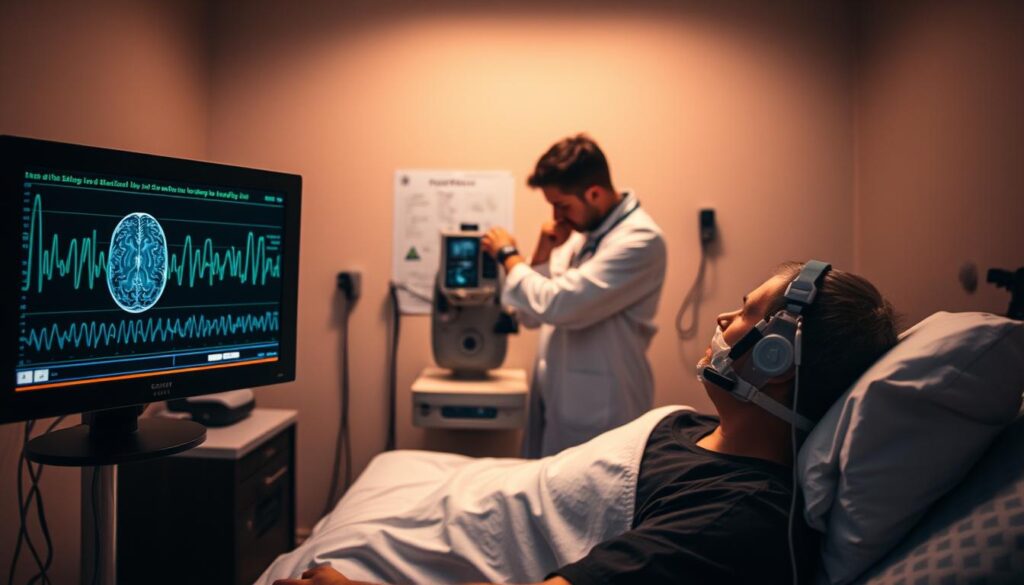
Sleep studies record data overnight in a lab or at home. Specialists use the Apnea-Hypopnea Index (AHI) to rate sleep apnea severity. AHI counts breathing disruptions per hour. Higher numbers mean more severe apnea, which can raise seizure risk.
“Accurate sleep studies are critical for patients with epilepsy. They help us see if apnea is worsening their condition.”
Doctors also check for light sleep stages, where seizures often start. Knowing your AHI score guides treatment choices. For example, CPAP machines can improve breathing and lower seizure triggers. Don’t skip these tests—they’re your roadmap to better health!
Diagnosing Both Conditions: What to Expect During Testing
Figuring out the sleep apnea seizure relationship needs special tests. EEGs watch brain waves for seizures. They’re key when sleep apnea might cause seizures.
- Standard EEG: Checks brain activity when awake.
- Sleep-deprived EEG: Tests after staying awake to see how lack of sleep impacts seizures.
- Extended monitoring: Records over days to catch events happening during sleep.
“EEG tests during sleep can reveal how oxygen changes and sleep patterns influence seizure risks,” says the American Epilepsy Society.
Neurologists also use MRI scans to check brain structure. They do neuropsychological tests to see how sleep affects thinking. These tests show how sleep apnea’s oxygen drops and sleep stage disruptions tie into seizure triggers. For example, 40% of epilepsy patients also have sleep apnea, showing a clear overlap needing thorough evaluation.
Understanding this sleep apnea seizure relationship helps doctors tailor treatments. Tests show how sleep fragmentation and low oxygen levels alter brain signals, linking both conditions. Knowing your sleep patterns and seizure triggers through these assessments is key to managing both disorders effectively.
Diagnosing Both Conditions: What to Expect During Testing
When you see a doctor, get ready to talk about your sleep and health history. They will ask lots of questions. This helps them understand how sleep apnea affects seizures and how to help you. They might ask about:
- Sudden changes in sleep patterns or nighttime breathing struggles
- How often and when seizures happen, especially at night
- What medicines you take, like those for epilepsy that could make sleep apnea worse
- If your family has a history of sleep or epilepsy issues
- If you feel very tired during the day or have headaches in the morning
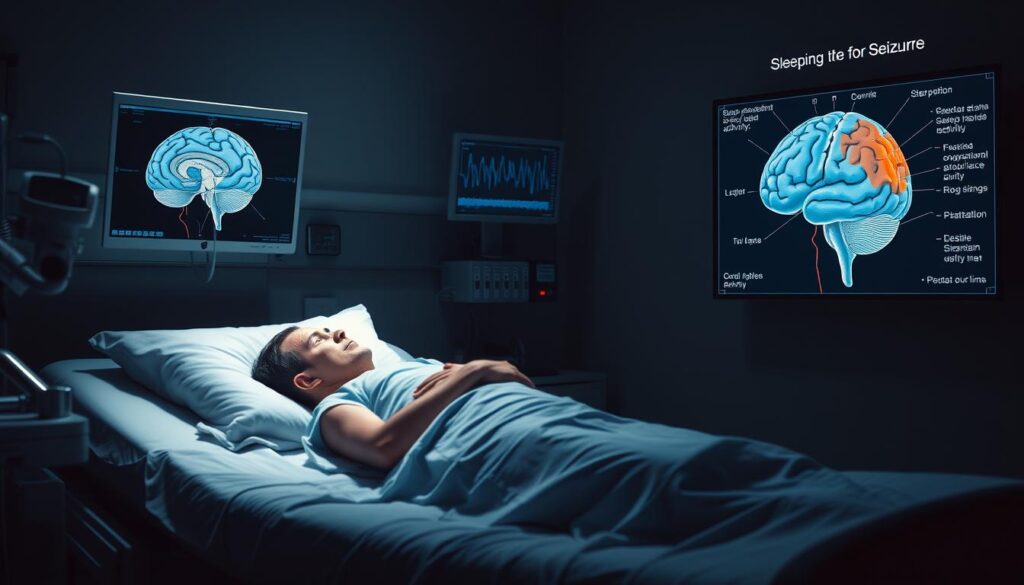
“Treating sleep apnea may reduce seizure frequency by improving sleep quality,” states the American Epilepsy Society.
Doctors might also ask about alcohol use, weight changes, and stress levels. It’s important to be truthful. This helps them see how your lifestyle affects your symptoms. Bring a sleep diary to note when seizures happen and how you felt beforehand. Tell them if your partner has noticed pauses in breathing at night.
Getting ready for this means sharing:
– When seizures occur
– Any recent stress or changes in medication
– Family health history related to both conditions
Sharing these details helps doctors link sleep problems to seizure triggers. Good communication leads to accurate tests and treatment plans that fit your needs.
Treatment Options That Address Both Sleep Apnea and Seizure Risk
Understanding the sleep apnea epilepsy connection opens doors to treatments that tackle both issues. CPAP (continuous positive airway pressure) therapy stands out as a key option. Studies show that using CPAP may lower seizure rates in people with both conditions.
A study of 235 epilepsy patients with sleep apnea found that those using CPAP saw fewer seizures over time.
CPAP works by keeping your airway open during sleep. This reduces oxygen dips and brain stress linked to seizures. Research shows that regular use can cut seizure frequency, especially in those with drug-resistant epilepsy.
A 2023 trial in Europe found that patients using CPAP over 12 weeks had fewer nighttime seizures and better oxygen levels.
- How to use CPAP effectively:
- Choose a comfortable mask (nasal, full-face, or nasal pillows).
- Set the machine to “ramp” mode to adjust pressure gradually.
- Use a humidifier to ease nasal dryness.
- Track your usage with the device’s built-in app or logbook.
Adherence matters. Doctors define compliance as using CPAP for 4+ hours/night on 70% of nights. Patients who stick to this routine see bigger improvements.
In the study, 75% of those who followed these guidelines reported fewer seizures. Talk to your care team about mask adjustments or adding pillows to improve comfort during sleep.
While CPAP is the primary option, other therapies are under study. A recent trial tested sulthiame, a new drug, which improved breathing in sleep apnea patients but hasn’t yet shown seizure reduction. For now, CPAP remains the go-to for managing the sleep apnea epilepsy connection. Always work with your doctor to tailor your plan and monitor progress.
Treatment Options That Address Both Sleep Apnea and Seizure Risk
Managing medicines for sleep apnea and seizures is tricky. Can sleep apnea cause seizures? It’s a complex issue. Some seizure drugs can make sleep apnea worse.
For example, valproic acid and pregabalin can lead to weight gain. This makes sleep apnea worse. It’s a cycle where one problem can make the other worse.
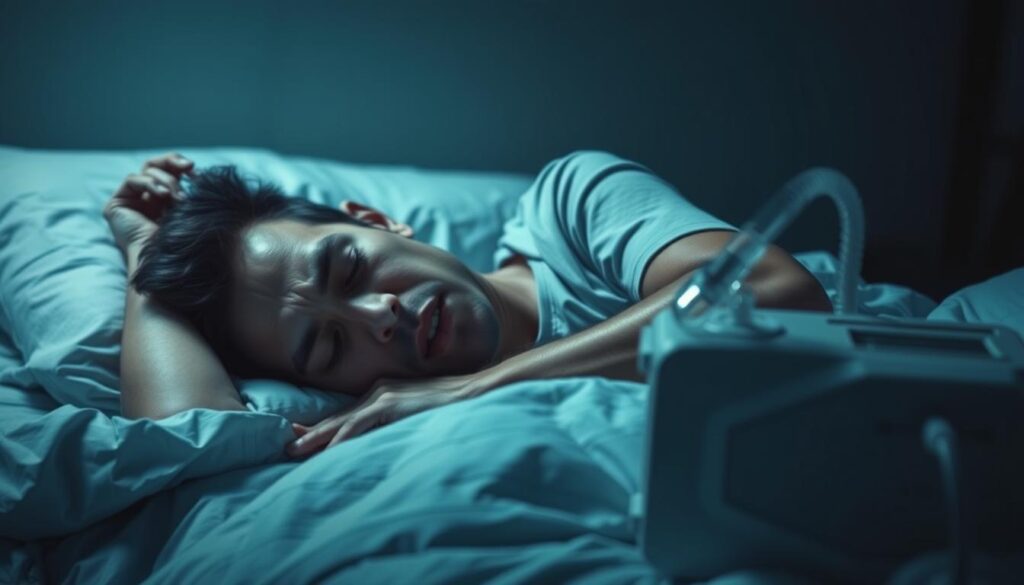
- Valproic acid: Linked to significant weight gain and metabolic changes.
- Pregabalin and perampanel: May contribute to obesity, a known risk for sleep apnea.
- Antiseizure drugs like gabapentin and vigabatrin: Require dose adjustments to avoid side effects that disrupt breathing.
Doctors often adjust treatment plans based on individual risks.For example, patients taking multiple antiseizure medications (ASMs) might face higher BMI levels. Studies show 47.7% of those with epilepsy have nocturnal seizures. Working together, neurologists and sleep specialists can create better plans.
When choosing medications, your team may:
- Opt for weight-neutral drugs like lamotrigine or levetiracetam.
- Monitor BMI and sleep metrics closely, especially if you take >2 ASMs.
- Adjust doses to avoid nighttime side effects like drowsiness or muscle relaxation.
Coordinated care ensures your medicines help both conditions without harm. Talk to your doctor about your sleep and seizure goals.
Treatment Options That Address Both Sleep Apnea and Seizure Risk
Making lifestyle changes can help reduce the sleep apnea seizures link and improve overall health. Small adjustments to daily habits often lead to big improvements for both conditions. Here’s how to start:
- Weight Management: Excess body weight contributes to airway blockage during sleep. Losing even 5-10% of body weight can ease breathing and lower seizure triggers.
- Sleep Position Training: Sleeping on your side or stomach reduces airway collapse risks. Pillows designed for side-sleeping can encourage healthier breathing patterns.
- Regular Exercise: Low-impact activities like walking or yoga boost oxygen flow and regulate brain activity. Aim for 30 minutes most days.
- Limit Stimulants: Alcohol and smoking worsen sleep apnea and lower seizure thresholds. Cut back gradually with medical guidance.
- Consistent Sleep Schedule: Going to bed and waking at the same time daily strengthens circadian rhythms. Avoid screens 1–2 hours before bed.
| Measure | OE Group (Epilepsy + OSA) | OSE Group (OSA Only) |
|---|---|---|
| Apnea-Hypopnea Index (AHI) | 24.9 events/h | 33.4 events/h |
| Arousal Index (AI) | 23.3 events/h | 30.8 events/h |
| Oxygen Desaturation Index (ODI) | 19.6 | 28.8 |
| BMI (kg/m²) | 27.0 | 25.9 |
Even small steps like cutting caffeine after noon or adding a 15-minute walk daily can build momentum. Partner with your doctor to tailor changes to your unique situation. Every adjustment strengthens your body’s ability to manage both conditions safely.
Personal Stories: How People Manage Both Sleep Apnea and Seizures
Many people share their stories about correlation between sleep apnea and seizures. Sarah, 34, cut her seizures by 70% with CPAP therapy. She says, “My brain finally got the oxygen it needed. Now I sleep better and wake up with fewer headaches.”
“Finding the right balance between my epilepsy meds and my CPAP machine took time, but it changed everything.”
Common strategies include:
- Adjusting CPAP masks for comfort to ensure consistent use
- Tracking sleep patterns to spot seizure triggers
- Discussing medication side effects with doctors to avoid weight gain linked to worsened sleep apnea
Some face challenges like correlation between sleep apnea and seizures. Mark, 58, saw his seizures drop from 4 to 1 per week after six months on CPAP.
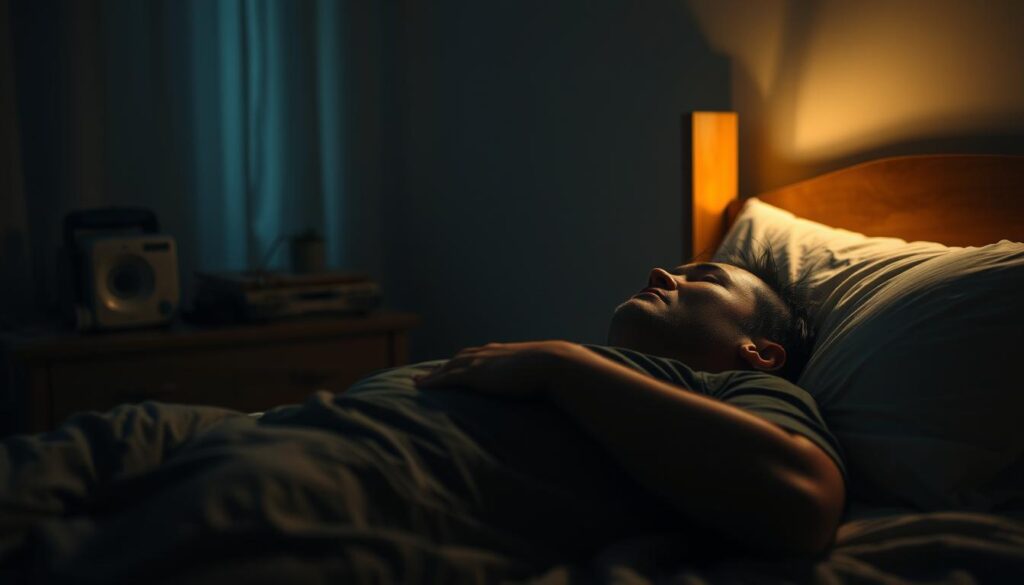
Untreated sleep apnea can make seizures worse. The correlation is clear: better sleep quality often leads to fewer seizures. The American Epilepsy Society notes that 40% of epilepsy patients have sleep apnea.
Managing both conditions requires teamwork. Doctors now often recommend sleep studies for seizure patients. If you’re struggling, remember: small adjustments like adjusting sleep schedules or using humidifiers with CPAP can make a big difference.
Preventing Complications: Strategies for Better Sleep and Seizure Control
Creating the best sleep environment is key for managing sleep apnea and seizure risks. Making small changes can greatly improve your health. Here’s how to begin:
- Control room temperature: Keep it between 60–67°F (15–19°C). Cooler temperatures help you sleep better and reduce stress at night, which can help with sleep apnea and seizures.
- Limit light exposure: Use blackout curtains. Bright lights can mess up your sleep and make both conditions worse.
- Reduce noise: White noise machines or earplugs can block out sounds that might trigger seizures or apnea.
- Position CPAP equipment safely: Make sure tubing is not loose. Place devices away from edges to avoid falls during the night.
Studies show 40% of people with epilepsy also have sleep apnea. Bad sleep environments can make oxygen drops worse during apnea. This can lower seizure thresholds. Try to go to bed and wake up at the same time every day. Avoid screens before bed because they can delay melatonin release, making sleep cycles worse.
If you use CPAP, clean your filters every week. Dry air can be uncomfortable? Try a heated humidifier. Going to bed and waking up at the same time every day can help stabilize your brain rhythms. This can reduce disruptions in REM and NREM sleep that are linked to seizures. Making small changes today can help lower the risk of both conditions getting worse over time.
Preventing Complications: Strategies for Better Sleep and Seizure Control
Tracking your symptoms is key to managing sleep apnea and reducing seizure risk. Small details like sleep patterns or medication times can reveal critical trends. Here’s how to start:
- Keep a daily log: Note when seizures occur, sleep interruptions, and any triggers like stress or missed meds.
- Use apps like MyEpilepsyDiary or Sleep Cycle to track breathing pauses and seizure frequency.
- Wearables like Fitbit or Apple Watch can monitor heart rate changes linked to both conditions.
“Over 28% of juvenile myoclonic epilepsy cases link first seizures to sleep deprivation,” says a recent study.
Focus on sleep-apnea-seizure connections. Track:
– Time of night seizures happen (20% occur exclusively at night)
– How often you wake up gasping (a sign of apnea)
– Medication adherence and its effect on nighttime symptoms
![]()
Share findings with your team. Patterns like increased seizures after apnea episodes can guide treatment changes. Consistent logging helps doctors adjust CPAP settings or antiepileptic dosages. Remember: Early detection of worsening sleep apnea or rising seizure risk could prevent life-threatening complications like SUDEP. Stay proactive—your records are your best tool for safer sleep and fewer seizures.
Preventing Complications: Strategies for Better Sleep and Seizure Control
Managing the sleep apnea seizure connection needs a team of healthcare experts. Find doctors who know about both conditions. Neurologists, sleep doctors, and primary care providers work together to avoid problems.
Here’s how to build your support network:
- Neurologists: Focus on seizure management and AED dosing
- Sleep specialists: Address apnea diagnosis and CPAP therapy
- Primary care providers: Monitor overall health and medication interactions
“Effective care coordination reduces risks when managing both conditions,” says Dr. Laura Martinez, a sleep medicine specialist. “Your team must share information to prevent gaps in care.”
Share your medical records with all your doctors. This way, they know your health history. Ask your neurologist to talk to your sleep doctor about AED schedules.
Studies show that taking AEDs in the evening can help control seizures without making you too tired.
Keep a journal to track when seizures happen. At appointments, ask: “How does my sleep apnea treatment interact with epilepsy medications?” Make sure all doctors talk about possible side effects.
Over 30% of epilepsy patients still have seizures, even with new AEDs. So, teamwork is very important.
Remember: Your voice matters. Tell your care team you want regular meetings. This teamwork helps fight the sleep apnea seizure connection.
Conclusion: Taking Control of Your Sleep Apnea to Reduce Seizure Risk
Understanding the link between sleep apnea and seizures is key. Studies show that sleep apnea and epilepsy can make each other worse. For example, a study found that epilepsy patients using CPAP therapy had a 63% drop in seizures.
This is compared to a 14% drop in those not treated. It shows treating sleep apnea can help control seizures.
People with epilepsy are 2.36 times more likely to have sleep apnea. Untreated sleep apnea can make seizures worse by causing low oxygen and disrupted sleep. But, there are steps you can take.
Using CPAP therapy, especially for at least 4 hours a night, can help. It improves breathing and reduces seizures and tiredness. Over 85% of users in trials saw better seizure control.
Start by getting a sleep check-up. If you have sleep apnea, work with experts to find the best treatment. Even small changes, like using CPAP or better sleep habits, can help.
Remember, good sleep is good for your brain. Treating both conditions together can lead to fewer seizures and better health. Your efforts today can make a big difference in your future.









